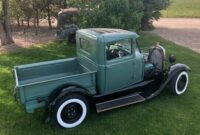Snow Plow For Pickup Trucks: Your Ultimate Guide to Mastering Winter pickup.truckstrend.com
As winter approaches, bringing with it the inevitable blanket of snow, the thought of clearing driveways, parking lots, and access roads can fill many with dread. For pickup truck owners, however, this annual challenge presents an opportunity. Equipped with the right snow plow, your versatile pickup truck transforms into a powerful snow-clearing machine, offering unparalleled efficiency, convenience, and even a lucrative business opportunity. Far more than just an accessory, a snow plow for a pickup truck is an investment in autonomy, safety, and productivity during the snowy season.
This comprehensive guide will delve into everything you need to know about snow plows for pickup trucks, from understanding their mechanics and choosing the right one for your needs to mastering operation and essential maintenance.
Snow Plow For Pickup Trucks: Your Ultimate Guide to Mastering Winter
Understanding the Powerhouse: Why Pickup Trucks Excel at Plowing
Pickup trucks are uniquely suited for snow plowing, making them the vehicle of choice for both residential and commercial snow removal. Their inherent design provides several key advantages:
- Robust Frame Construction: Pickups are built with heavy-duty frames designed to withstand significant stress and weight, crucial for handling the forces exerted by a plow pushing heavy snow.
- Powerful Engines: The engines in most modern pickups offer ample horsepower and torque, necessary for pushing large volumes of snow, even uphill or through deep drifts.
- Four-Wheel Drive (4WD) Capability: Essential for traction in slippery conditions, 4WD ensures your truck can maintain grip and push through challenging snow depths without getting stuck.
- Weight Capacity: With higher Gross Vehicle Weight Ratings (GVWR) and Gross Axle Weight Ratings (GAWR), pickups can safely bear the additional weight of a snow plow and the snow it pushes, often requiring specific front axle ratings for plow readiness.
- Versatility: When not plowing, your pickup retains its utility for everyday tasks, making it a multi-purpose asset year-round.

Types of Snow Plows for Pickup Trucks
Choosing the right type of plow is paramount, as different designs excel in varying conditions and applications.

Straight Blade Plows:
- Description: The most common and simplest design, featuring a single, straight blade that pushes snow forward or to the side when angled.
- Ideal For: Residential driveways, smaller commercial lots, and general snow clearing. They are straightforward to operate and generally less expensive.
- Material: Available in steel (durable, heavier) or poly (lighter, slicker, rust-resistant).

-
V-Plows (V-Blade Plows):
- Description: These plows feature two independent wings that can be angled into a "V" shape to cut through deep snow and drifts, a scoop shape to carry snow, or a straight configuration.
- Ideal For: Deep snow, heavy drifts, breaking trails, and commercial applications where versatility is key. Their ability to funnel snow reduces resistance.
- Advantage: Excellent for initial passes in heavy snow and efficient stacking.
-
Pusher Box Plows (Box Plows):
- Description: While primarily designed for larger equipment like skid steers and wheel loaders, some larger pickup trucks can be fitted with smaller box plows. These feature a wide, enclosed box design that allows them to push large volumes of snow forward and contain it, making fewer passes necessary.
- Ideal For: Large parking lots, expansive commercial properties, and moving significant amounts of snow quickly.
- Note: Requires a very robust truck and typically a heavier-duty mounting system.
Essential Components of a Pickup Truck Snow Plow System
Beyond the blade itself, a complete snow plow system for a pickup truck involves several critical components:
- Blade: The main snow-contacting surface, made of steel or poly, with a replaceable cutting edge.
- Mounting System: This is the robust framework that attaches the plow to your truck’s frame, typically a custom sub-frame designed for specific truck models.
- Lift Frame/Tower: Connects the blade to the hydraulics and allows for vertical movement.
- Hydraulic System: Comprises a pump, hoses, and cylinders that power the blade’s lift, angle, and sometimes scoop functions.
- Controller: An in-cab joystick or button controller that allows the operator to manipulate the plow’s movements.
- Plow Lights: Essential auxiliary lights mounted on the plow frame, as the plow often obstructs the truck’s headlights.
- Deflector: A rubber or poly strip along the top of the blade that prevents snow from spilling over onto the windshield.
- Trip Edge/Full Trip: A safety mechanism that allows the blade to trip forward or upward when hitting an obstacle, preventing damage to the plow, truck, or obstacle.
The Benefits of Owning a Snow Plow for Your Pickup Truck
The advantages of equipping your pickup with a snow plow are numerous, catering to both personal convenience and professional opportunity:
- Unmatched Efficiency: Clear large areas in a fraction of the time it would take with shovels or even powerful snow blowers.
- Cost Savings: Eliminate the recurring expense of hiring professional snow removal services for your property.
- Income Generation: For entrepreneurial individuals, a snow plow can be a significant source of income during winter months, offering services to neighbors, businesses, or even forming a full-fledged snow removal company.
- Convenience & Autonomy: Clear your own property on your schedule, without waiting for contractors.
- Safety: Quickly clear snow and ice to maintain safe access for vehicles and pedestrians.
- Physical Relief: Reduce the strenuous physical labor associated with manual snow removal.
Choosing the Right Snow Plow for Your Pickup Truck: Key Considerations
Selecting the ideal snow plow isn’t a one-size-fits-all decision. Several critical factors must be carefully evaluated:
- Truck Compatibility: This is the most crucial factor.
- GVWR & GAWR: Your truck must meet the minimum GVWR and front GAWR specifications required by the plow manufacturer. Overloading can damage your truck, void warranties, and create dangerous operating conditions.
- Suspension: Heavier plows may necessitate front suspension upgrades (e.g., heavier springs, torsion bars) to maintain proper ride height and handling.
- Plow Prep Package: Some trucks come with a factory "snow plow prep package" that includes heavier duty alternators, wiring harnesses, and front suspension components.
- Plowing Needs & Application:
- Residential vs. Commercial: Residential users might opt for lighter, simpler straight blades, while commercial operators will require more robust, versatile V-plows or even box plows for larger properties.
- Average Snowfall: Areas with frequent heavy snow may benefit more from V-plows, while regions with lighter, less frequent snow may find straight blades sufficient.
- Property Layout: Consider obstacles, narrow passages, and where snow needs to be stacked.
- Budget: Snow plows represent a significant investment. Prices vary widely based on type, size, features, and brand. Factor in potential installation costs and future maintenance.
- Blade Material:
- Steel: Durable, robust, but heavier and prone to rust if not maintained.
- Poly: Lighter, slicker (snow slides off easily), rust-resistant, and often more forgiving on paved surfaces.
- Mounting System: Ensure the plow’s mounting system is specifically designed for your truck’s make, model, and year. Quick-attach systems offer convenient installation and removal.
Installation and Maintenance Essentials
Proper installation and ongoing maintenance are vital for maximizing your plow’s lifespan and ensuring safe operation.
- Professional Installation: While some components can be DIY, it’s highly recommended to have the initial plow system installed by a professional. This ensures correct wiring, hydraulic connections, and proper mounting to your truck’s frame.
- Pre-Season Check-up: Before the first snowfall, perform a thorough inspection:
- Hydraulics: Check fluid levels, hoses for leaks, and ensure cylinders operate smoothly.
- Electrical: Test all lights, connections, and the controller.
- Blade: Inspect the cutting edge for wear and replace if necessary. Check all bolts and pins for tightness.
- Lubrication: Grease all pivot points and moving parts.
- During Season Maintenance:
- Regularly clean the plow to prevent ice buildup.
- Inspect hoses and connections for damage after each major use.
- Keep the cutting edge clean and sharp.
- Post-Season Storage:
- Clean the plow thoroughly, removing all dirt and salt.
- Lubricate all moving parts.
- Apply a rust preventative to steel components.
- Store the plow in a dry, covered area, ideally on its stand.
Operating Your Snow Plow Safely and Effectively
Plowing snow isn’t just about pushing it; it requires technique and awareness.
- Pre-Plow Reconnaissance: Before plowing, walk the area to identify obstacles like curbs, drains, speed bumps, and sprinkler heads. Mark them with reflective stakes.
- Plowing Techniques:
- Forward Plowing: The most common method. Angle the blade to direct snow to one side.
- Back-Dragging: Useful for clearing snow close to garage doors or buildings. Drop the blade and pull snow away from the structure.
- Stacking Snow: Strategically push snow to designated areas, building piles that won’t obstruct visibility or traffic.
- Slow and Steady: Avoid excessive speed, which can damage your truck, plow, or property. Momentum is key, but don’t ram into snowbanks.
- Visibility: Ensure your plow lights are working, and your truck’s windshield is clear. Consider auxiliary lighting for night plowing.
- Awareness: Be mindful of pedestrians, other vehicles, and property lines. Avoid pushing snow onto public roads or neighboring properties.
Common Challenges and Solutions
- Heavy, Wet Snow: This type of snow is dense and difficult to push. Take smaller bites, make multiple passes, or consider a V-plow for better penetration.
- Ice Buildup: Apply de-icing agents to surfaces before plowing or use a heavier plow to break through ice.
- Visibility Issues: Invest in high-quality LED plow lights. Keep your windshield and mirrors clean.
- Truck Strain: Ensure your plow is correctly sized for your truck. Consider suspension upgrades if your truck sags significantly. Regular truck maintenance (tires, brakes, engine) is crucial.
- Damage to Property: Mark obstacles clearly. Practice careful, controlled movements.
Practical Advice for the Aspiring Snow Plow Operator
- Read Your Truck’s Manual: Always consult your truck’s owner’s manual for specific recommendations on plowing and weight limits.
- Invest in Quality: A cheaper plow might seem appealing, but quality construction and reliable hydraulics will save you headaches and money in the long run.
- Practice Makes Perfect: Start in light snow to get a feel for your plow’s controls and your truck’s response.
- Insurance Matters: If you plan to plow commercially, ensure your insurance covers commercial snow removal operations.
- Safety First: Always wear appropriate clothing, ensure good visibility, and never operate the plow while distracted.
Price Table: Representative Snow Plow for Pickup Trucks
Please note: Prices are estimated and can vary significantly based on brand, features, current market conditions, and dealer. Installation costs are typically separate.
| Plow Type | Brand/Model Example | Blade Width (ft) | Material | Key Features | Estimated Price Range (USD) | Ideal Application |
|---|---|---|---|---|---|---|
| Light-Duty Straight | Western Suburbanite | 6.5 – 7.5 | Poly | Receiver hitch mount, lightweight, basic controls | $3,000 – $4,500 | Residential driveways, light snowfall |
| Medium-Duty Straight | Fisher HT Series | 7.5 – 8.5 | Steel | Frame mount, durable, full-trip edge, reliable hydraulics | $4,500 – $6,500 | Larger residential, small commercial |
| Heavy-Duty Straight | Boss Sport-Duty / Power-V | 8.0 – 9.0 | Steel/Poly | Robust frame mount, powerful hydraulics, deflector | $6,000 – $8,000 | Commercial, heavy snowfall, versatile |
| V-Plow | Meyer V-Plow / Western MVP3 | 7.5 – 9.5 (V-shape) | Steel/Poly | Articulating wings, deep snow cutting, back-dragging | $7,500 – $11,000 | Deep drifts, commercial, challenging terrain |
| Box Plow (Pickup-compatible) | SnowWolf QuattroPlow (smaller models) | 8.0 – 10.0 | Steel | Enclosed box, high capacity snow moving, often for larger 3/4-ton+ trucks | $9,000 – $15,000+ | Large parking lots, high-volume moving |
Frequently Asked Questions (FAQ) About Snow Plows for Pickup Trucks
Q1: Can any pickup truck have a snow plow?
A: No. Your truck must meet specific minimum GVWR (Gross Vehicle Weight Rating) and GAWR (Gross Axle Weight Rating) requirements, particularly for the front axle, as specified by the plow manufacturer. Many light-duty trucks may not be suitable without significant suspension upgrades. Always check your truck’s owner’s manual and the plow’s specifications.
Q2: Do I need to modify my truck to install a snow plow?
A: Often, yes. Depending on your truck model and the plow’s weight, you might need to install heavier-duty front springs, torsion bars, or a dedicated "snow plow prep package" (if your truck didn’t come with one). You’ll also need a wiring harness for the plow’s electrical system and lights.
Q3: How long does it take to attach or detach a snow plow?
A: With modern quick-attach mounting systems, attaching or detaching a snow plow can often be done in just a few minutes once the initial sub-frame is installed.
Q4: What’s the difference between a steel and a poly blade?
A: Steel blades are heavier, more durable, and generally preferred for heavy-duty commercial use. Poly blades are lighter, slicker (snow slides off easier), rust-resistant, and can be more forgiving on delicate surfaces.
Q5: How much does a complete snow plow system for a pickup truck weigh?
A: The weight varies significantly by type and size. A light-duty straight plow might weigh 500-700 lbs, while a heavy-duty V-plow can weigh 900-1,200 lbs or more. This weight is added to your truck’s front axle.
Q6: Is it difficult to learn how to plow snow?
A: Operating a snow plow requires practice and finesse, but it’s not overly difficult. Start with light snow to get accustomed to the controls and the feel of pushing snow. Learning proper techniques for stacking and back-dragging will improve efficiency.
Q7: Will plowing snow void my truck’s warranty?
A: It depends on the manufacturer and if your truck has a "snow plow prep package" or if you’ve made necessary modifications. Using a plow that exceeds your truck’s ratings or making improper modifications can void parts of your warranty. Always consult your dealer.
Conclusion
A snow plow for your pickup truck is more than just a piece of equipment; it’s a powerful tool that transforms your vehicle into a winter workhorse. Whether you’re looking to efficiently clear your own property, help out neighbors, or embark on a profitable commercial venture, the right snow plow can empower you to conquer even the harshest winter conditions. By understanding the different types of plows, ensuring proper truck compatibility, committing to regular maintenance, and mastering safe operating techniques, you can turn winter’s challenge into an opportunity, making your pickup truck an indispensable asset when the snow starts to fall.


